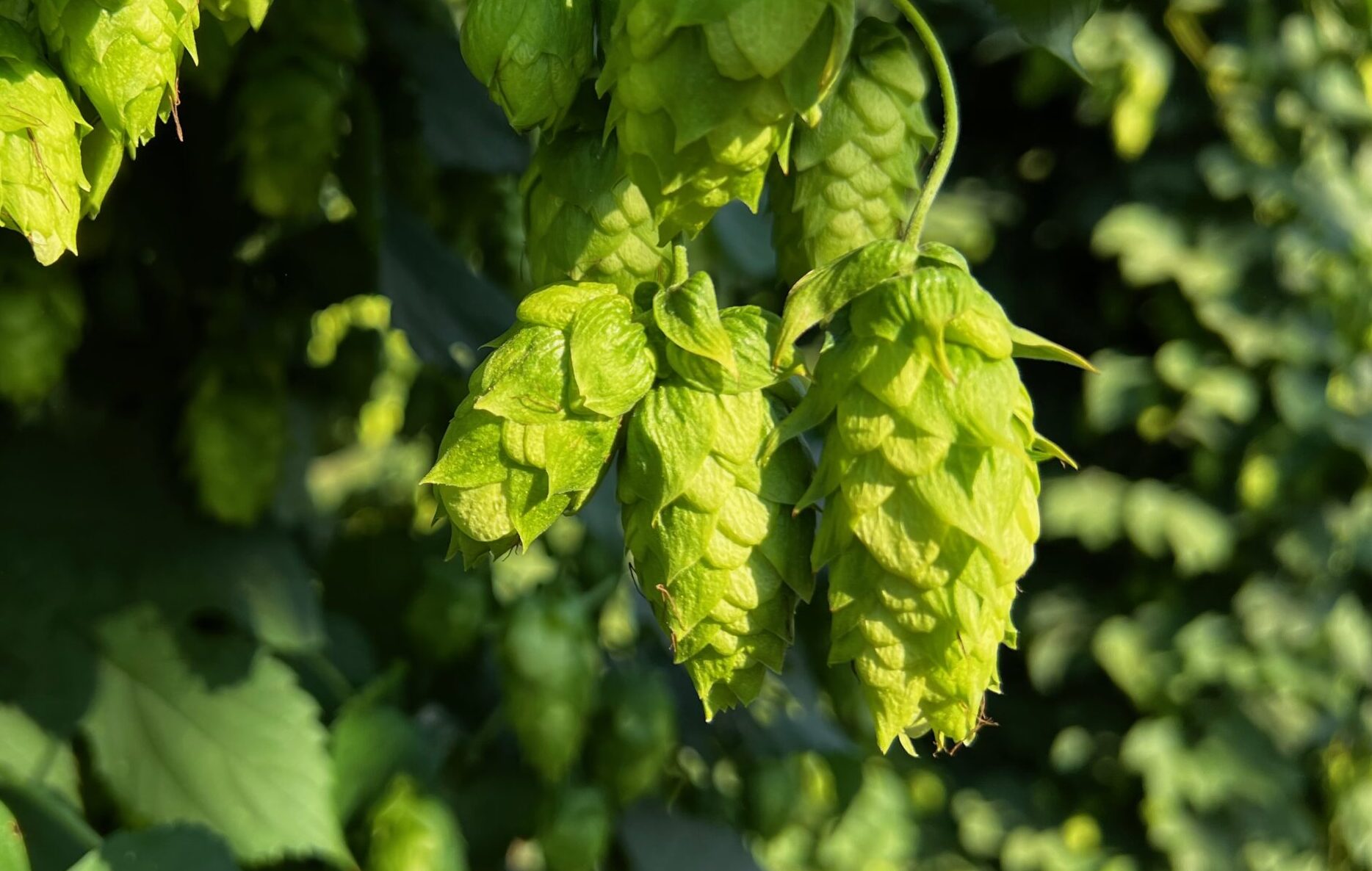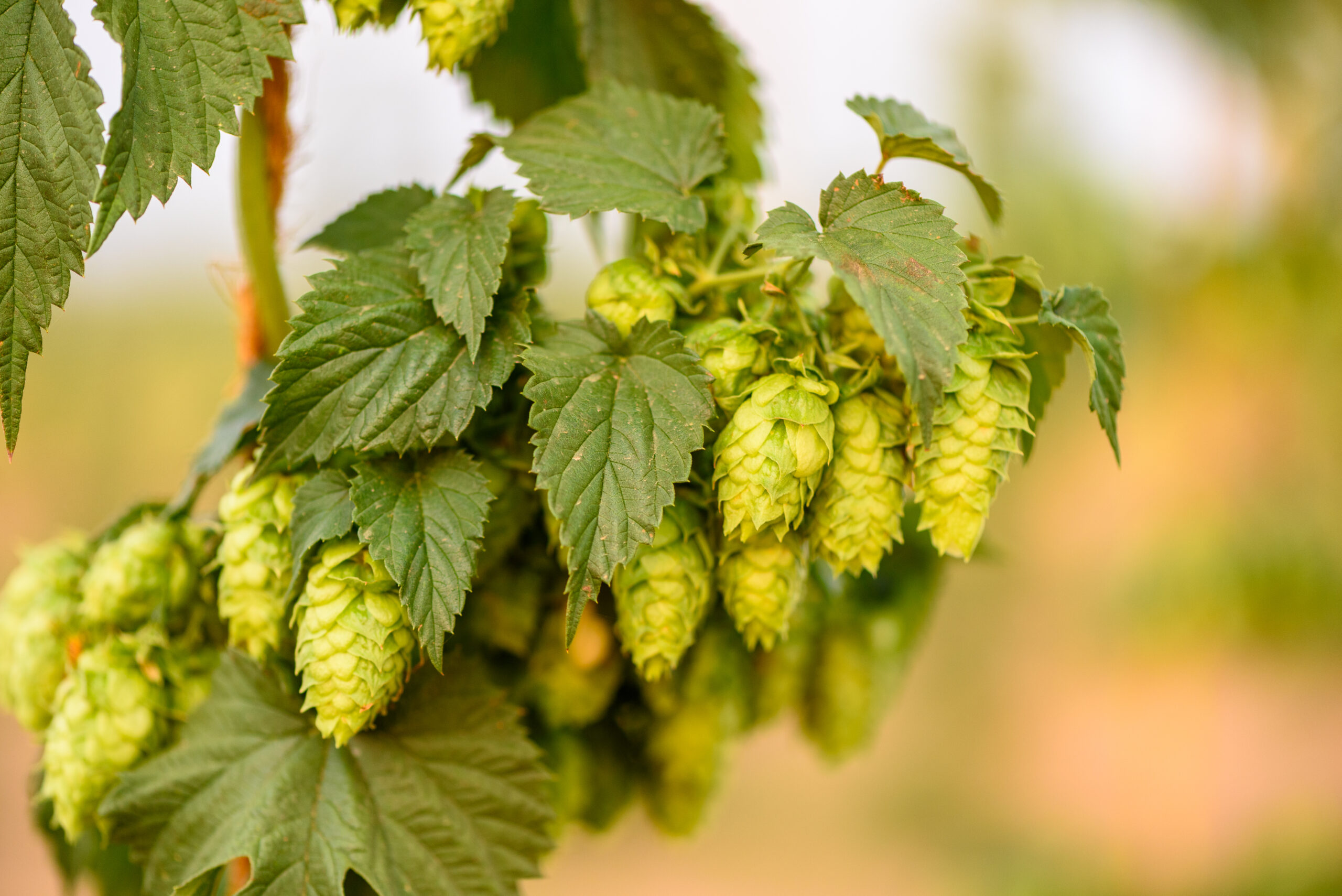Hop (Humulus lupulus L.) plays an important role in imparting aroma, flavor, and bitterness in beer. The species is perennial, rhizomatous, and climbing and has a large, complex genome and dioecious mating system. Hop breeding is challenging due to the perennial nature of the species, traditionally long variety development timeline (upwards of 13 years, on average), highly specialized infrastructure required for evaluation, and subjective nature of sensory attributes.
The Agricultural Research Service (ARS) of the U.S. Department of Agriculture (USDA) focuses its hop breeding efforts on improving disease resistance to downy and powdery mildews, yield and agronomic characteristics, and unique aroma and brewing attributes. The vast majority of US hop production takes place in the Pacific Northwest states of WA, ID, and OR with secondary production in MI and NY. USDA-ARS has two active breeding programs, one in Corvallis, OR and another in Prosser, WA. Historically, disease and abiotic stress pressures differ between the two locations and the programs work together to select for hop lines that are both broadly and locally adapted. The breeding programs collaborate closely with members of the USDA-ARS hop research team (Plant Pathologist & Horticulturist), brewing scientists, genomicists, and virologists at Oregon State University and Washington State University to meet their breeding goals.






